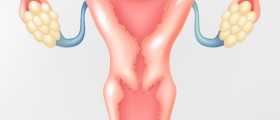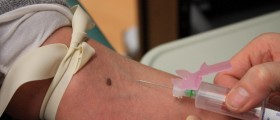
A Hürthle cell is a type of cell found in the thyroid gland. Its presence is closely related to Hashimoto's thyroiditis and follicular thyroid cancer. This type of cell is actually enlarged epithelial cell filled with abundant eosinophilic granular cytoplasm. Hürthle cells are believed to origin from follicular epithelial cells.
Apart from being a part of Hashimoto's thyroiditis Hürthle cells can form a Hürthle cell adenoma, a benign tumor which, in rare cases, may turn into malignant and give metastases. So a Hürthle cell adenoma may transform into a Hürthle cell carcinoma. This rather unusual tumor accounts for approximately 4% of all thyroid cancers and, similarly to all others, it is quite serious.
Benign Hürthle Cells vs. Malignant Hürthle Cells
Only after tumor removal, a well experienced doctor can examine the tumor and confirm whether Hürthle cells making the tumor are benign or malignant. It is also essential to estimate if there is invasion of the tumor capsule and the blood vessels. If both of the mentioned are positive, Hürthle cell tumor is classified as malignant. In case the tumor is benign and is completely removed, it represents no potential threat any more and will not come back again. More about Hürthle Cell Thyroid Cancer
Hürthle cells are quite different in their appearance comparing to other thyroid cells. They tend to occur more in older individuals. The tumor, mostly the malignant one, affects people of approximately 55 age. Such patients are around 10 years older than people who are generally affected by follicular thyroid cancer. As it is the case with any other carcinoma, Hürthle cell carcinoma has tendency to spread to regional lymph nodes, is capable of coming back, affecting the gland or it can spread to distant organs such as the lungs or different bones.
Thyroid cancer in general has better prognosis in younger patients. Since Hürthle cell carcinoma affects older population it is considered more dangerous. The prognosis, however, depends on many different factors, the size of the tumor and its initial extent, invasion of blood vessels and regional lymph nodes are only some of them.
Hürthle Cell Carcinoma Treatment
The best thing to do is to completely remove the tumor with some or all the thyroid tissue. How extensive the surgery would be basically depends on different factors and tumor staging. It is not common to surgically remove regional lymph nodes. Still, if they are affected they are surgically removed as well.
Treatment may continue with radioactive iodine. This treatment options is not as effective as it is for other types of thyroid cancer (particularly follicular cancer). On the other hand, the treatment is well-tolerated and may be sometimes efficient enough. After the treatment patients undergo regular check-ups which monitor potential recurrence of the disease.

















Your thoughts on this
Loading...